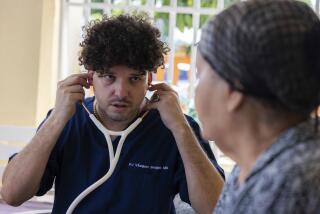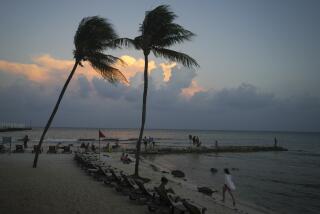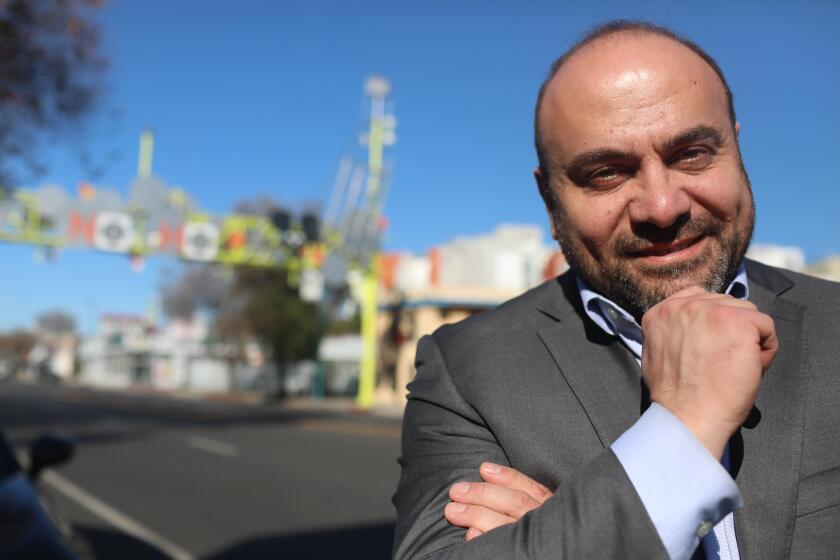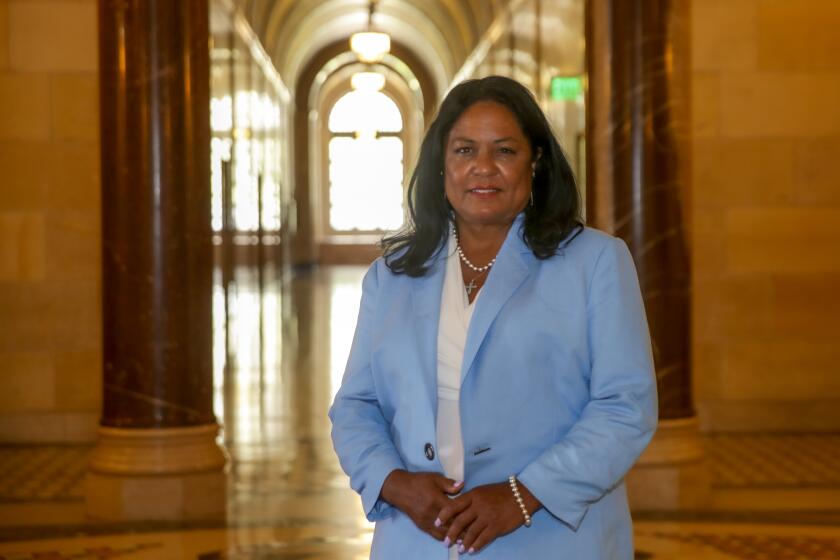Opinion: For Puerto Rico, Maria was bad, the aftermath worse, but the future is the biggest challenge
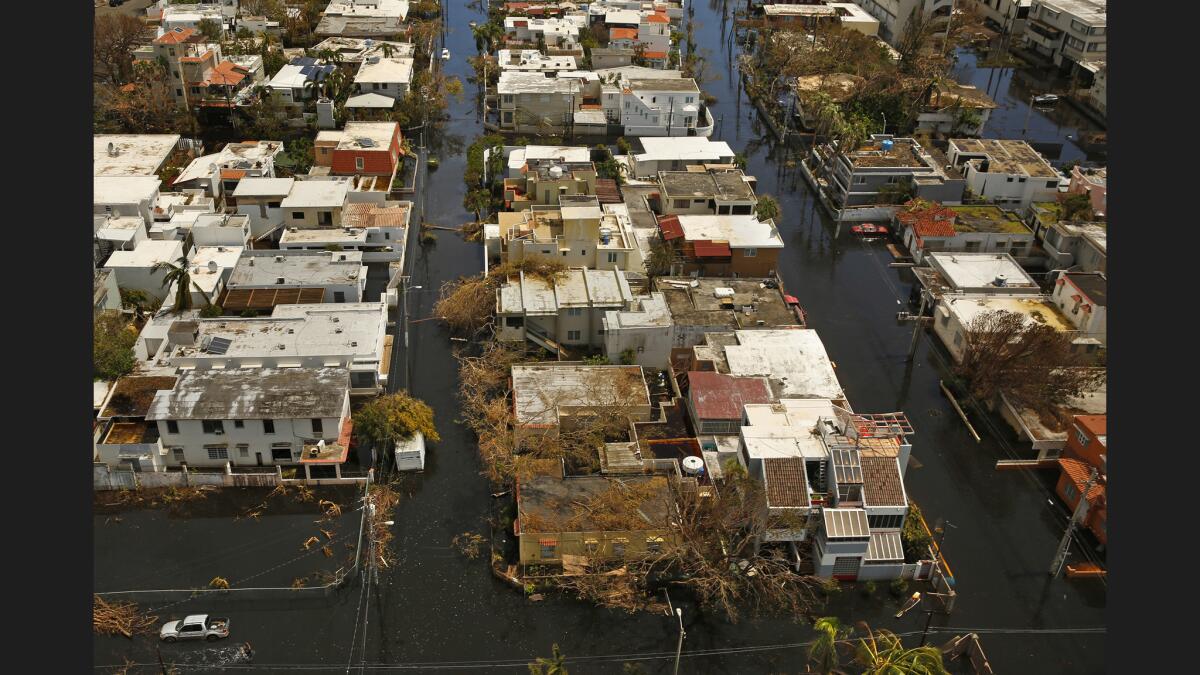
It’s been nearly a week since Hurricane Maria barreled across the length of Puerto Rico, flattening buildings, shredding trees and unleashing devastating floods. The demolished electrical grid will take months to rebuild, which means there’s no juice to power hospitals, communications, water and sewer systems — all the basic elements of modern life.
Roofs blew away, walls crumbled, roads disappeared, and it took days to clear harbors and airports sufficiently to receive emergency supplies via air and sea — the only way to get help to the island. As a result, some 3.4 million American citizens are living in increasingly dangerous conditions, on the verge of a massive humanitarian crisis that will take a long time to resolve.
And President Trump, breaking days of silence over the catastrophe, issued a three-part tweet Monday night that Puerto Rico “is in deep trouble,” and noted that the territorial government was already in a financial crisis “with billions of dollars owed to Wall Street and the banks which, sadly, must be dealt with.”
Think about that for a few seconds. A U.S. territory has been knocked to its knees by a natural disaster, and the president’s belated response is to remind it that, “Hey, remember, you’re not only destroyed, but you’re broke, too.”
The president announced Tuesday morning that he will visit the island, and likely the similarly devastated U.S. Virgin Islands, next week. But how the federal government manages the disaster could well become Trump’s Katrina, a debacle that would haunt his administration.
The Federal Emergency Management Agency has 10,000 people and other assistance on the ground, but reports from local government leaders is that the help, while welcomed, isn’t sufficient for the task. Granted, it’s a difficult situation — trucks and rescue vehicles can’t just drive into the zone, as they could with Houston after Harvey’s horrific rains and flooding. But isn’t that the test of leadership? To find creative ways to solve problems, while offering reassurance to the victims that their government is, indeed, there for them?
The scale of the devastation is mind-boggling. The main island of Puerto Rico is about 500 square miles smaller than Los Angeles County, and about a third of the population. At this moment, relatively few of those people have sufficient shelter, access to potable water, or food, or even the ability to travel to find supplies. One mayor warned that “hysteria is beginning to spread.”
Isn’t that the test of leadership? To find creative ways to solve problems, while offering reassurance to the victims that their government is, indeed, there?
People are stranded in high-rises, and few have power for air conditioning to counter the tropical heat and humidity. Those relying on medicines that must be refrigerated (about 14% of the islanders suffer from diabetes; insulin must be refrigerated to maintain its potency) or treatment systems requiring electricity are particularly vulnerable. Local officials report there are still parts of the island from which they have not received damage and casualty reports. The death toll, which is likely to rise, stands at 16.
The island’s agricultural industry blew away in the storm, an estimated loss of $780 million in crops, and it will take a year or better to return to normal production, which means basic foods will have to be shipped in for months.
Puerto Rico was already losing people to the mainland, most seeking work — about 45% of the remaining population lives below the poverty line, twice the level of the poorest mainland states, such as Louisiana and Mississippi. (California has the highest rate when cost of living is factored in, but still far below Puerto Rico.) And the unemployment rate is more than twice the national rate.
So what does this portend? Months of human misery and a likely increased exodus of people from Puerto Rico to the mainland, where they will test social service networks and affect labor markets. About 1.5 million people born in Puerto Rico already live on the mainland, which, as U.S. citizens, they are entitled to do. But a further erosion of population does not bode well for the island’s future.
The U.S., and Puerto Rico, need a long-term plan for rebuilding, and not just to overcome the effects of the hurricane. Puerto Rico has been, to varying degrees, part of the country for nearly 120 years, and the nation bears some moral responsibility to help put it on a more secure financial footing.
One place to start: electricity infrastructure. As long as Puerto Rico has to rebuild most of its system, it may as well incorporate more renewable sources, particularly wind and solar, rather than return to its heavy reliance on oil and coal. And it should bury its power lines — those already buried survived the storm relatively unscathed, and the next storm is only a matter of time.
The problem is cost. The island’s electric utility is bankrupt. Money also will be the biggest hurdle to the overall recovery. The rest of the nation needs to help, now, before a desperate situation turns even worse.
Follow Scott Martelle at @smartelle or on Facebook.
More to Read
A cure for the common opinion
Get thought-provoking perspectives with our weekly newsletter.
You may occasionally receive promotional content from the Los Angeles Times.

